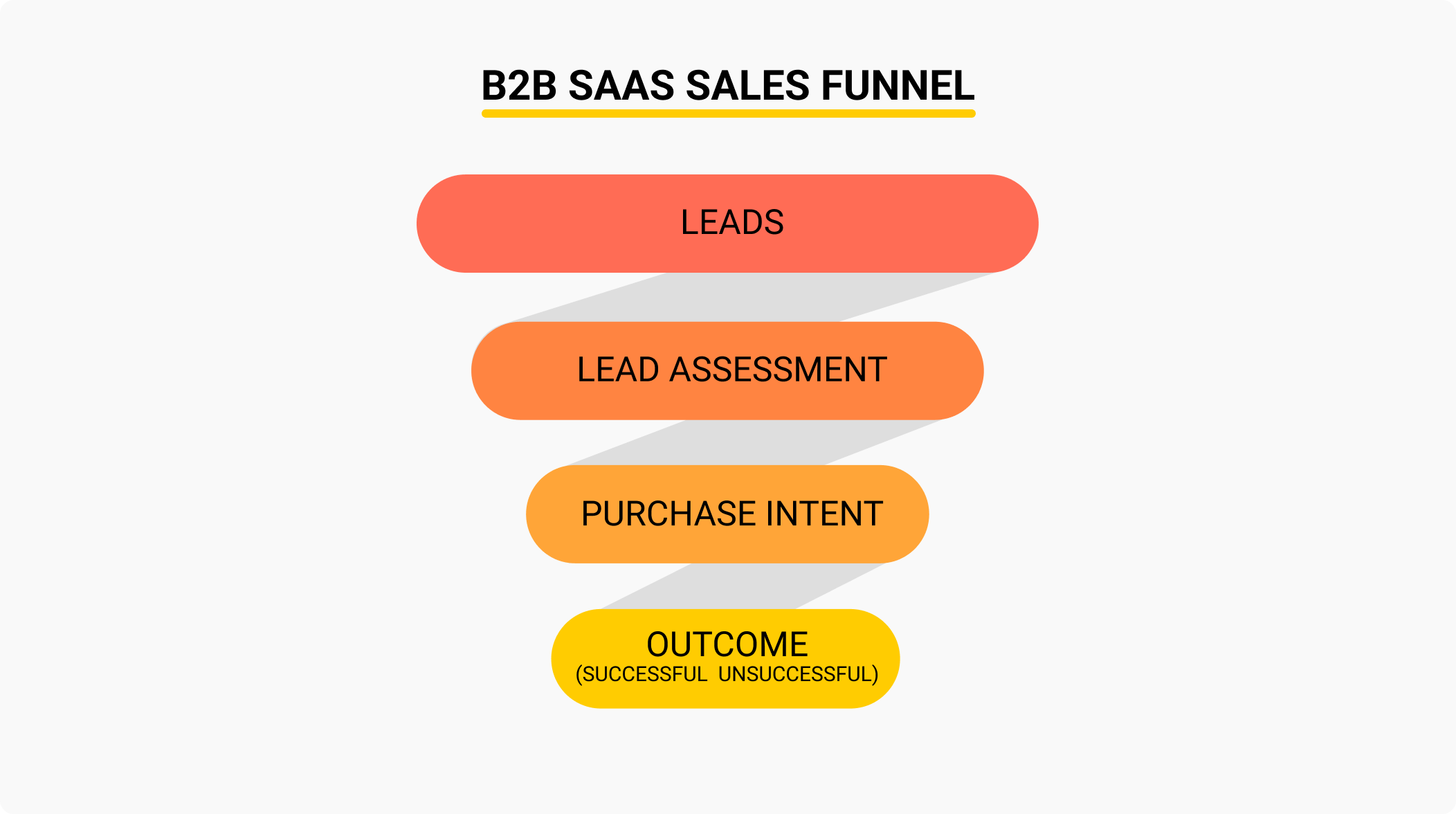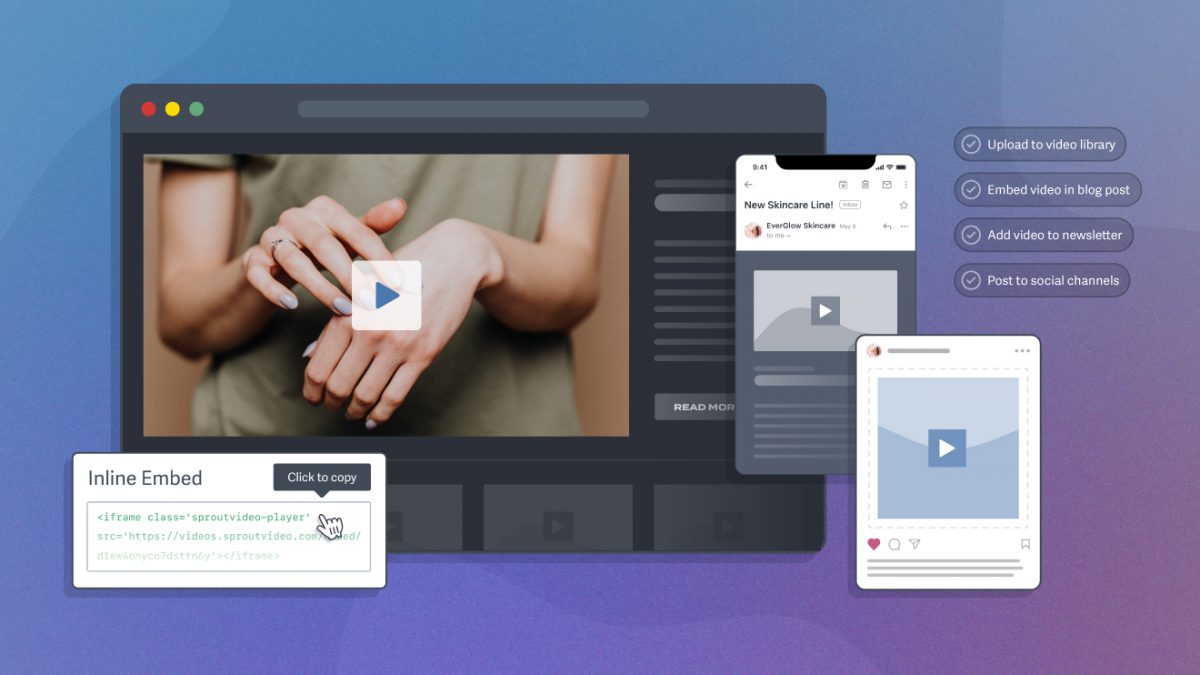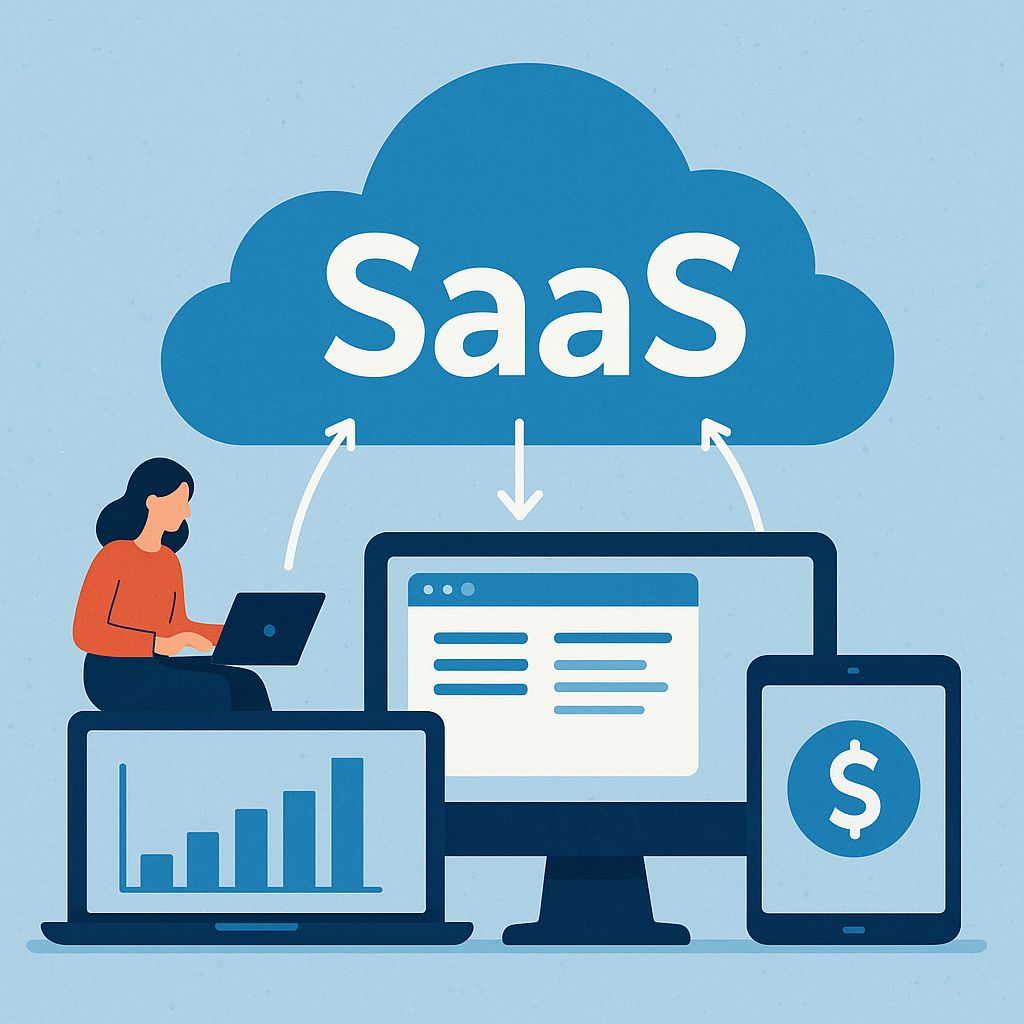Key Takeaways
- SaaS explainer videos can be created for as little as $500-1,500 with the right approach, compared to $5,000+ for traditional agency production.
- AI-powered tools like Synthesia and Descript have revolutionized the affordability of professional-quality explainer videos in 2025.
- The most effective SaaS explainer videos focus on solving a specific customer pain point in under 90 seconds.
- DIY approaches using templates and freelance talent can reduce costs by up to 70% while maintaining professional quality.
- VideoCraft’s platform helps businesses create custom SaaS explainer videos at a fraction of traditional costs with their AI-powered template library.
Why Your SaaS Company Needs an Explainer Video Without Breaking the Bank
SaaS products solve complex problems, but explaining their value shouldn’t be complicated or expensive. With attention spans shrinking and competition growing, a clear, concise explainer video has become essential for converting visitors into customers.
In today’s digital landscape, SaaS companies with explainer videos report conversion rate increases of 20-80% compared to those without. These short videos clarify your value proposition in seconds, addressing the notorious challenge of explaining intangible software solutions. What’s changed dramatically in 2025 is the accessibility of professional-quality video production at remarkably affordable price points.
VideoCraft’s recent study found that 72% of potential SaaS customers prefer watching a video to reading text when researching solutions. More importantly, 65% of those viewers are more likely to purchase after watching an effective explainer. The bottom line? You’re leaving money on the table without one. The good news is that creating these videos no longer requires the $10,000+ budgets of years past.
The True Cost of SaaS Explainer Videos in 2025
The explainer video market has transformed dramatically over the past few years. What once required $5,000-$20,000 for a basic 60-second animated explainer can now be accomplished for a fraction of that cost. Today’s price ranges typically fall into three tiers: budget ($500-1,500), mid-range ($1,500-3,000), and premium ($3,000-7,000) – a far cry from the five-figure investments previously required.
Average Price Points for Professional Production
Traditional animation studios still charge $150-300 per second of finished animation, putting a 90-second video at $13,500-27,000. However, modern approaches have disrupted this model entirely. Template-based services offer professional results for $500-1,500, while AI-powered platforms deliver custom animations for $1,000-3,000. Even freelancer-created custom animations now average just $2,000-5,000, with many talented creators in global markets offering exceptional quality at the lower end of this range. Learn more about affordable custom videos and how they drive SaaS startups toward success.
Where Your Budget Actually Goes
Understanding cost breakdown helps identify where to save without sacrificing quality. In traditional production, scriptwriting typically consumes 10-15% of the budget, storyboarding another 10-15%, animation 40-50%, voiceover 5-10%, music/sound effects 5%, and revisions 10-15%. The animation phase clearly dominates costs – and it’s precisely where new technologies offer the greatest savings. By leveraging AI animation tools or template systems, you can redirect resources to script development and voiceover quality, the elements that most directly impact conversion rates.
Many SaaS companies make the mistake of underspending on scripting while overspending on animation complexity. A strategically written script with simpler visuals almost always outperforms a weak script with elaborate animation. The voice talent quality also significantly impacts viewer engagement, making it worth allocating at least 10% of your budget to professional narration even when cutting costs elsewhere.

The Hidden Costs Most Marketers Don’t Expect
Beware the sneaky expenses that derail budgets. Revisions are the number one culprit – with traditional studios charging $75-150 per hour for changes beyond their initial allowance. Without clear approval processes, a $3,000 project can quickly balloon to $5,000+. Another hidden cost is licensing for music, images, and fonts, which can add hundreds to your budget if not carefully managed.
Technical optimizations for different platforms also consume unexpected resources. Videos optimized for your website may need reformatting for social media, email campaigns, and paid advertising – each requiring different dimensions, lengths, and call-to-action approaches. Smart producers plan for these variations upfront, creating modular assets that can be repurposed without starting from scratch. This approach can save up to 40% compared to creating separate videos for each channel.
5 Budget-Friendly Approaches That Actually Work
The revolution in affordable SaaS explainer videos comes from five main approaches, each offering unique advantages depending on your specific needs and internal capabilities. The key is matching your approach to your available resources and quality requirements rather than automatically assuming expensive equals better.
1. DIY Production with Premium Templates
Cost range: $200-1,000
Time investment: 5-15 hours
Best for: Early-stage startups, MVPs, and companies with design-savvy team members
Quality ceiling: Medium-high with proper execution
Premium template systems have evolved dramatically in 2025, offering sophisticated animation frameworks that can be customized with your branding, messaging, and product screenshots. Platforms like Renderforest, Vyond, and Toonly provide extensive libraries of character animations, transitions, and scene templates specifically designed for SaaS products. The quality gap between template-based and custom animation has narrowed significantly, with many viewers unable to distinguish between the two.
2. AI-Powered Video Creation Tools
AI has transformed video production affordability in 2025. Platforms like Synthesia, Elai, and HeyGen now generate professional-looking video presentations featuring AI avatars that can speak your script in multiple languages with natural-sounding voices and realistic lip synchronization. For just $30-100 monthly, these tools eliminate the need for cameras, studios, and human presenters. Discover how affordable custom videos drive SaaS startups toward success.
The most advanced AI video platforms now incorporate animated explainer segments alongside AI presenters, creating a hybrid approach that balances the human connection with engaging visual explanations. VideoCraft’s platform stands out by combining AI presenters with customizable SaaS-specific animation templates, allowing startups to create professional explainers in hours rather than weeks.
3. Freelance Talent Marketplaces
The global freelance marketplace has dramatically expanded the pool of affordable animation talent. Platforms like Fiverr, Upwork and specialized sites like Animotion connect you with skilled animators in regions with lower cost structures, offering rates 50-70% below traditional studios. When hiring freelancers, focus on specialists who demonstrate SaaS industry experience in their portfolios, as they’ll understand how to effectively visualize abstract software concepts.
The key to success with freelancers is providing crystal-clear creative briefs and references. Invest time creating detailed storyboards and collecting example videos that represent your desired style and quality. Establish milestone payments tied to specific deliverables to manage quality throughout the process. With proper management, freelancers can deliver $10,000-quality videos for $2,000-3,000.
4. Simplified Animation Styles
Animation complexity directly impacts cost, with highly detailed characters and environments consuming substantially more production time than simplified styles. Flat design, minimalist 2D animation, and isometric illustrations have become particularly effective for explaining SaaS products while keeping costs manageable. These styles focus viewers’ attention on the concept rather than elaborate visuals.
Motion graphics and kinetic typography (animated text) represent the most cost-efficient animation approaches, typically costing 30-50% less than character-based animation while maintaining high effectiveness for abstract concepts. For many SaaS products, particularly B2B solutions, these simplified styles actually outperform more elaborate animations by keeping the focus on the value proposition rather than entertaining visuals. Learn why a custom app demo video is the key to SaaS growth.
5. Subscription-Based Video Services
Several innovative companies now offer subscription-based explainer video services that dramatically reduce per-video costs. For a monthly fee of $200-500, these services allow you to create multiple videos using their systems, often with account managers who assist with scripting and design. While less customized than one-off productions, these services work well for companies needing to explain multiple features or create videos for different buyer personas.
Essential Elements of a High-Converting SaaS Explainer
Regardless of your budget, certain elements separate high-converting explainer videos from those that waste your investment. The fundamental formula remains consistent: identify a specific pain point, introduce your solution, demonstrate how it works, and provide a clear call to action. What varies is execution quality.
The most successful SaaS explainers maintain laser focus on a single use case rather than attempting to showcase every feature. They establish emotional connection by validating the viewer’s challenges before introducing the solution. In 2025’s crowded marketplace, specificity converts better than generality.
Length continues to be critical, with optimal engagement occurring in videos between 60-90 seconds. Each additional 30 seconds typically reduces completion rates by 15-20%. For complex products, consider creating multiple targeted videos rather than one comprehensive explanation.
An effective structure follows the problem-agitation-solution framework: 20-30% establishing the problem, 10-20% emphasizing its impact, 40-50% demonstrating your solution, and 10-15% presenting the call to action. This framework naturally guides viewers toward conversion by creating emotional investment before revealing your product.
Script Structure That Sells
The script remains your most important investment, regardless of production budget. The most effective SaaS explainer scripts follow a proven pattern: open with a question or statement that immediately identifies your target user’s problem, introduce your solution as the answer, demonstrate key functionality with specific benefits (not features), address common objections, and close with a clear call to action.
Word economy is essential – aim for 150-180 words per minute of video. Focus each sentence on a single idea, using active voice and concrete language. Avoid technical jargon unless your audience specifically expects it. The script should sound conversational when read aloud, as stilted language immediately reduces viewer engagement.
Visual Style That Matches Your Brand
Visual consistency between your explainer video and overall brand creates trust and reinforces recognition. While template-based approaches limit customization, even budget-friendly productions should incorporate your brand colors, typography, and general aesthetic. Inconsistency between video style and website design creates cognitive dissonance that reduces conversion effectiveness.
Character design deserves special attention in SaaS explainers. Abstract characters work better than highly detailed ones for most software explanations, as they allow viewers to project themselves into the scenario. If representing specific personas, ensure diversity in character representation to avoid alienating segments of your audience.
Voiceover Quality vs. Cost Tradeoffs
Voice talent represents one area where cutting costs can significantly damage results. While AI voices have improved dramatically in 2025, human voiceovers still outperform them for emotional connection and persuasive impact. Professional voice actors on platforms like Voice123 and Voices.com now offer rates from $150-400 for typical explainer scripts, making them accessible even for budget productions.
Voiceover Quality vs. Cost Tradeoffs
Voice talent represents one area where cutting costs can significantly damage results. While AI voices have improved dramatically in 2025, human voiceovers still outperform them for emotional connection and persuasive impact. Professional voice actors on platforms like Voice123 and Voices.com now offer rates from $150-400 for typical explainer scripts, making them accessible even for budget productions. For those in the SaaS industry, leveraging affordable custom videos can be a game-changer in reaching target audiences effectively.
If budget constraints make professional voiceover impossible, consider using the highest quality AI voices from platforms like ElevenLabs or WellSaid Labs. These next-generation AI voices now include emotion controls and natural pausing that closely mimic human delivery. For technical products with global audiences, AI voices also offer the advantage of easy translation into multiple languages at minimal additional cost.
Music and Sound Effects on a Budget
Background music establishes emotional tone and maintains engagement throughout your explainer. Subscription libraries like Epidemic Sound ($15/month) and Artlist ($25/month) offer unlimited access to thousands of royalty-free tracks specifically designed for video production. These services have largely replaced one-time purchase options by providing regularly updated libraries at affordable rates.
Sound effects add professionalism when used judiciously. Platforms like Soundsnap provide affordable access to professional-quality effects that can emphasize key points in your explanation. Even free resources like Freesound.org now offer surprisingly high-quality options when properly filtered. The strategic use of 3-5 sound effects per minute of video creates professional polish without overwhelming the narration.

Step-by-Step Production Process for Tight Budgets
Creating affordable explainer videos requires careful planning to maximize efficiency. The most successful budget-conscious producers invest more time in pre-production to minimize costly revisions later in the process.
1. Pre-Production Planning to Save Money
Begin by creating a detailed creative brief that clearly defines your audience, core message, desired outcome, and stylistic preferences. Include links to example videos that represent the quality and style you’re targeting. This document becomes your roadmap throughout production, preventing costly misunderstandings and scope creep.
Research your audience thoroughly before scripting. Understanding their knowledge level, pain points, and objections allows you to create targeted messaging that resonates immediately. This research phase often reveals that viewers need less technical explanation than producers initially assume, allowing for shorter, more focused videos. For more insights on creating effective explainer videos, check out explainer videos that sell your software.
2. Writing Scripts That Minimize Animation Costs
Script with animation complexity in mind. Avoid describing elaborate scenes that require custom animation, instead focusing on simpler visuals that effectively communicate your concept. Use screen recordings for feature demonstrations rather than trying to recreate your interface through animation. This approach saves thousands in production costs while actually improving clarity. For more insights, explore how explainer videos can enhance software clarity.
Structure your script in a two-column format with narration text in one column and visual descriptions in the other. This format forces you to plan each visual element deliberately and helps identify opportunities to simplify. When working with templates or AI tools, review available visual assets before finalizing your script to ensure you’re writing for elements that exist within your chosen system.
3. Storyboarding for Efficiency
Even simple storyboards dramatically improve production efficiency. You don’t need artistic skill—basic sketches with notes about movement and timing are sufficient. Each frame should represent 5-10 seconds of final video, with annotations indicating transitions and camera movements. This visual roadmap typically reduces production time by 30-40% by eliminating guesswork during the animation phase.
When using templates or AI tools, storyboarding might involve selecting specific scenes and arranging them in sequence rather than drawing from scratch. Many modern platforms allow you to create a rough assembly of scenes before customizing content, essentially creating your storyboard within the production environment itself.
4. Smart Asset Creation and Reuse
Develop a consistent visual style that allows for element reuse throughout your video. Creating character poses, interface elements, and environments that can appear multiple times reduces production costs substantially. When working with freelancers, negotiate packages that include reusable assets for future videos or marketing materials.
For character-based animations, consider using stock character libraries rather than custom designs. Services like GraphicRiver offer affordable character packs with multiple poses and expressions. Similarly, icon packs, UI kits, and transition effects can be purchased once and used across multiple productions.
5. Budget-Conscious Editing Techniques
Efficient editing focuses on pacing rather than elaborate transitions. Simple cuts and fades maintain professionalism while avoiding the costs of custom transition effects. Standardize your approach to scene timing, using consistent patterns for introducing concepts, explaining benefits, and showcasing features. This standardization simplifies editing decisions and creates rhythm that enhances viewer comprehension.
When working with template systems, resist the temptation to use every available transition and effect. Professional results come from restraint—using a limited palette of visual techniques consistently throughout your video rather than showcasing every available option. This approach not only saves production time but creates a more cohesive final product.
Top 6 Affordable Tools Reshaping SaaS Video Production in 2025
The explainer video landscape has been transformed by accessible tools that deliver professional results without professional budgets. These platforms represent the best balance of affordability and quality for SaaS companies.
1. Descript for Audio and Basic Video Editing
Descript’s word-based editing revolutionizes the revision process by allowing you to edit video by editing text. At $20/month, it dramatically simplifies the often frustrating voiceover revision process. Its Overdub feature can generate AI versions of your own voice, making small script changes possible without re-recording. The platform’s screen recording capabilities also simplify product demonstrations, a critical element in effective SaaS explainers.
2. Synthesia for AI-Generated Presenters
Synthesia creates AI video presenters that deliver your script in a remarkably human fashion. Starting at $30/month, it offers dozens of diverse AI avatars and 120+ language options. The latest version includes gesture controls and emotion settings that create surprisingly engaging presentations. For SaaS explainers, this eliminates the need for studios, cameras, and human talent while maintaining professional appearance.
3. Vyond for Template-Based Animation
Vyond offers the most comprehensive template system specifically designed for business explainers. At $49/month, it provides extensive character libraries, built-in animations, and SaaS-specific visual elements. The platform’s strength lies in its balance of customization and ease-of-use, allowing non-designers to create professional animations through an intuitive interface.
4. Canva Video Suite for Marketing Teams
Canva’s expansion into video has created a surprisingly capable platform for simple explainers. At $30/month for teams, it offers thousands of templates, stock footage, and animation elements accessible through its familiar drag-and-drop interface. While less specialized than dedicated animation tools, its integration with broader marketing design makes it particularly efficient for teams already using Canva for other assets. For more insights on effective video strategies, check out Spire Video’s proven formula for high-converting explainer videos.
5. Lumen5 for Blog-to-Video Conversion
Lumen5 specializes in transforming existing content into video presentations. Its AI analyzes your blog posts or product pages, extracts key points, and automatically generates video drafts with relevant visuals. Starting at $19/month, it provides the fastest path from existing content to video format. For SaaS companies with established blogs, this offers an extremely efficient way to repurpose content into explainer format.
6. CapCut for Mobile-First Editing
CapCut has evolved from a mobile-only app to a surprisingly powerful cross-platform video editor. Its free version offers capabilities that rival premium software, including AI-powered features like background removal, automatic subtitling, and one-click animations. For teams creating shorter explainer clips for social media, CapCut’s intuitive interface and built-in templates make it possible to produce professional content in minutes rather than hours.

Real-World Examples: SaaS Startups That Nailed Affordable Videos
The most compelling evidence for affordable explainer video effectiveness comes from real-world success stories. These companies demonstrate that budget constraints don’t need to limit impact when strategic production decisions align with clear marketing goals.
Case Study: How TaskFlow Created Their Explainer for Under $500
TaskFlow, a project management startup, created their 90-second explainer for just $475 using a combination of Synthesia for presenter segments and Vyond for product demonstrations. Rather than attempting to explain their entire platform, they focused exclusively on their unique automatic task prioritization feature – their key competitive advantage. The targeted approach allowed for a simpler production while maximizing impact on their core value proposition.
Their production process started with extensive user research, identifying the specific language customers used to describe their pain points. This research directly informed their script, which used the exact phrases from customer interviews. For visuals, they used screen recordings of actual interface interactions rather than attempting to recreate their UI through animation, saving considerable production time while showing authentic product experience.
Before-and-After ROI Analysis
TaskFlow’s metrics tell the compelling story of their explainer’s impact. Before implementation, their landing page conversion rate averaged 1.8% with an average session duration of 48 seconds. After adding the explainer, conversion jumped to 4.3% while session duration increased to 2:12. The video’s play rate of 68% and completion rate of 72% demonstrated strong viewer engagement with their focused message.
Perhaps most significantly, their sales team reported a 35% reduction in basic “how does it work” questions during demo calls, allowing them to focus on higher-level value discussions rather than fundamental explanations. This efficiency improvement alone saved approximately 12 hours of sales time weekly, representing a 10x ROI on their video investment within the first month.
- Video production cost: $475
- Conversion rate increase: 139%
- Additional monthly conversions: 143
- Customer lifetime value: $720
- First-month revenue impact: $5,148
- Sales time saved: 48 hours monthly
TaskFlow’s experience highlights the compounding benefits of well-executed explainer videos that sell your software. Beyond direct conversion improvements, the operational efficiencies created throughout their marketing and sales process delivered ongoing returns far exceeding their modest investment.

Distribution Strategies That Maximize Your Video Investment
Creating an effective explainer represents only half the challenge – strategic distribution determines whether your investment delivers maximum returns. The most successful companies implement multi-channel approaches that repurpose their core explainer across various touchpoints in the customer journey.
VideoCraft’s research indicates that the average SaaS explainer video is underutilized by at least 40%, with companies typically using it on their homepage but missing opportunities for implementation throughout the marketing and sales process. A comprehensive distribution strategy ensures your video works continuously to generate returns on your investment.
Landing Page Optimization for Video Conversion
Your website homepage or dedicated product page remains the primary deployment location for explainer videos. Optimal placement typically appears above the fold but below your headline and initial value proposition. Custom thumbnails with play buttons consistently outperform auto-playing videos, with A/B tests showing 23-38% higher engagement when users actively choose to watch. Including a benefit-focused caption beneath the video further increases play rates by setting clear expectations for what viewers will learn.
Social Media Platform-Specific Approaches
Each social platform requires specific optimizations to maximize explainer effectiveness. LinkedIn benefits from shorter (30-45 second) versions focusing on business impact rather than features, while Instagram and TikTok require vertical reformatting and faster pacing. Facebook performs best with captions embedded directly in the video since 85% of views occur without sound. For more insights on creating impactful content for social media, explore our animated business videos for social media campaigns.
The most efficient approach creates a modular production process where core visual assets can be easily reorganized and resized for different platforms. This modular methodology allows you to produce platform-specific variations for approximately 25% of the cost of creating separate videos from scratch.
Email Campaign Integration
Email remains a particularly powerful distribution channel for SaaS explainer videos, with video thumbnails increasing open rates by 19% and click-through rates by 65% according to Campaign Monitor’s latest research. Rather than embedding videos directly (which creates deliverability issues), use compelling thumbnails with play button overlays linked to landing pages. For nurture sequences, consider creating several shorter explainers focusing on different features or use cases, deploying them strategically throughout your email workflow.
Your Action Plan for Creating Affordable SaaS Explainers
- Define your core message and target audience with absolute clarity before production begins
- Select your production approach based on your specific budget, timeline, and in-house capabilities
- Invest disproportionately in script development, focusing on customer language and problem validation
- Choose visual styles that balance professional quality with production efficiency
- Plan for multi-channel distribution from the beginning, creating assets that can be repurposed
- Establish clear success metrics and tracking mechanisms before launching your video
- Test multiple thumbnails, captions, and calls-to-action to optimize performance
The most successful SaaS companies approach explainer videos as ongoing assets rather than one-time projects. Establish quarterly review processes to evaluate performance and identify opportunities for testing and improvement. Small adjustments to calls-to-action, thumbnails, and placement often yield substantial conversion improvements without requiring new production. Learn more about how affordable custom videos drive SaaS startups toward success.
Start with a minimal viable approach, measure results carefully, and reinvest in more elaborate productions as ROI justifies. Many companies find that simple, focused explainers outperform more expensive productions by communicating clear value propositions without distracting visual complexity.
Remember that authenticity typically outperforms polish for SaaS audiences seeking solutions to specific problems. Focus your investment on clarity of message rather than visual spectacle, particularly in early production efforts.

Frequently Asked Questions
|
Update Trigger |
Typical Timeline |
Update Scope |
|---|---|---|
|
Major UI redesign |
Immediate |
Full replacement |
|
New core features |
Quarterly |
Targeted segment updates |
|
Shifting value proposition |
As needed |
Script and messaging revision |
|
Conversion decline (>15%) |
Immediate investigation |
A/B test new approaches |
|
Regular refresh |
18-24 months |
Style and approach modernization |
Q: How long should my SaaS explainer video be to maximize engagement?
Q: Is it worth hiring a professional voice actor for my explainer video?
If budget constraints make professional voiceover impossible, next-generation AI voices from ElevenLabs or WellSaid Labs now offer viable alternatives at $10-30 per script. These platforms have significantly narrowed the quality gap in 2025, particularly for straightforward business explanations. Avoid using team member recordings unless they have speaking experience, as poor narration consistently ranks as the top reason viewers abandon videos.
Q: What’s the minimum budget needed for a decent SaaS explainer video?
For optimal results with minimal investment, allocate $1,000-1,500. This budget allows for professional voice talent, premium templates or AI tools, and potentially limited assistance from freelancers for customization. At this level, the quality gap between your production and agency-created videos becomes negligible for most viewers, particularly when script quality receives appropriate focus.
Q: Can I create an effective explainer video without any design experience?
For best results without design experience, focus on structured templates with minimal customization options. Attempting extensive modifications without design knowledge often creates inconsistent results. Alternatively, consider hybrid approaches where you handle scripting and overall direction while engaging freelancers specifically for design elements requiring expertise.
Q: How often should I update my SaaS explainer video?
When planning your initial production, create assets with updates in mind. Modular approaches with reusable elements significantly reduce the cost of regular updates. Many companies now maintain “evergreen” sections explaining their core value proposition while regularly updating feature demonstrations and use cases as their products evolve.
VideoCraft’s platform specializes in helping SaaS companies create professional explainer videos that convert without breaking the bank. Our AI-powered templates and customization tools make it possible to produce videos that look like $10,000 agency productions for a fraction of the cost.





